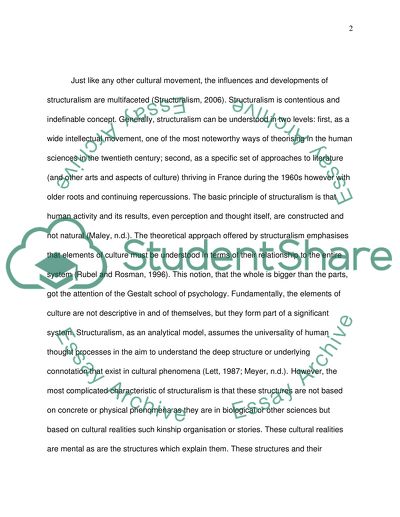Cite this document
(The Epistemological and Theoretical Assumptions of Structuralism Essay Example | Topics and Well Written Essays - 2000 words, n.d.)
The Epistemological and Theoretical Assumptions of Structuralism Essay Example | Topics and Well Written Essays - 2000 words. https://studentshare.org/philosophy/1500905-the-epistemological-and-theoretical-assumptions-of-structuralism
The Epistemological and Theoretical Assumptions of Structuralism Essay Example | Topics and Well Written Essays - 2000 words. https://studentshare.org/philosophy/1500905-the-epistemological-and-theoretical-assumptions-of-structuralism
(The Epistemological and Theoretical Assumptions of Structuralism Essay Example | Topics and Well Written Essays - 2000 Words)
The Epistemological and Theoretical Assumptions of Structuralism Essay Example | Topics and Well Written Essays - 2000 Words. https://studentshare.org/philosophy/1500905-the-epistemological-and-theoretical-assumptions-of-structuralism.
The Epistemological and Theoretical Assumptions of Structuralism Essay Example | Topics and Well Written Essays - 2000 Words. https://studentshare.org/philosophy/1500905-the-epistemological-and-theoretical-assumptions-of-structuralism.
“The Epistemological and Theoretical Assumptions of Structuralism Essay Example | Topics and Well Written Essays - 2000 Words”. https://studentshare.org/philosophy/1500905-the-epistemological-and-theoretical-assumptions-of-structuralism.


